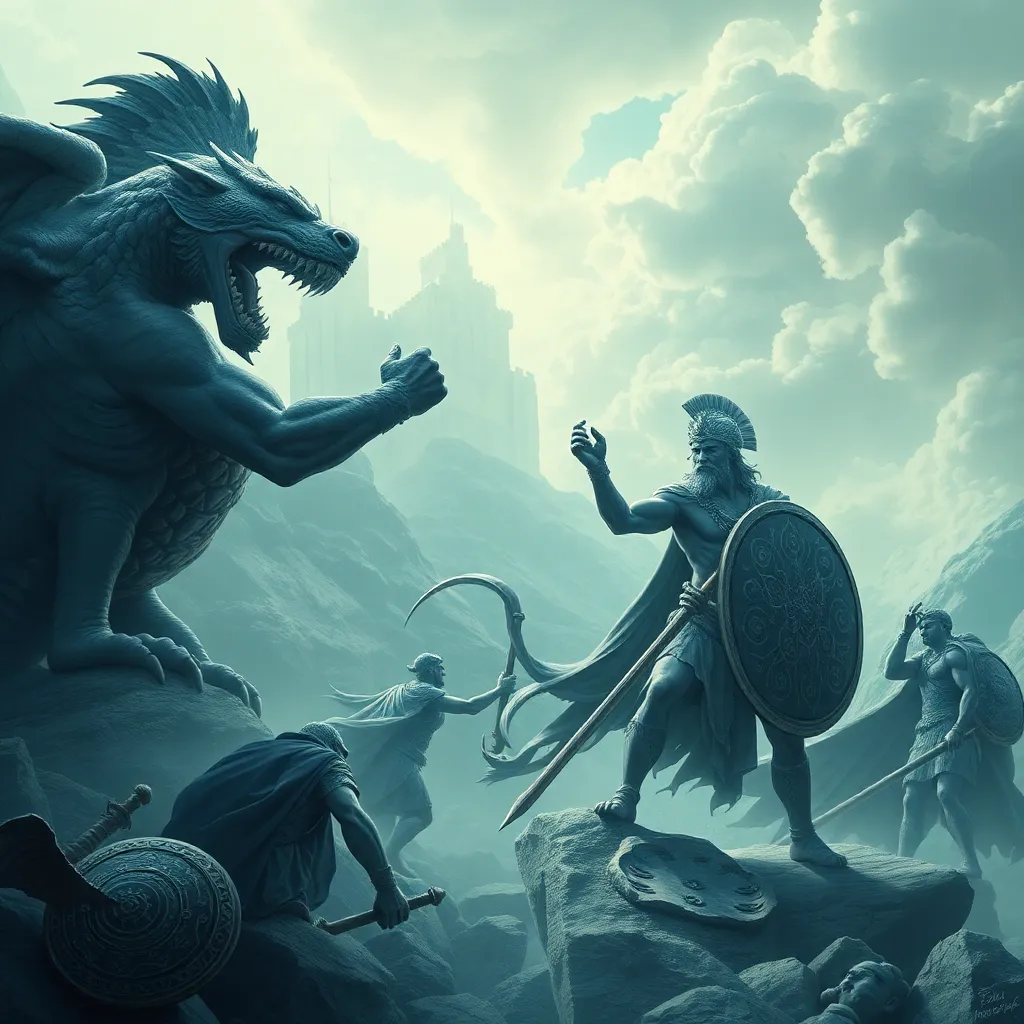The Art of Slaying Monsters: Perseus’ Techniques and Strategies
I. Introduction
Perseus, one of the most celebrated heroes of Greek mythology, is renowned for his daring exploits and bravery. His legendary status is not merely a product of his lineage but also of his remarkable adventures, particularly his encounters with fearsome monsters. Understanding the techniques and strategies that Perseus employed in his monster-slaying quests provides insight into the hero’s mindset and the broader themes of courage and resourcefulness in mythology.
This article aims to explore the intricacies of Perseus’ approach to facing formidable foes, shedding light on the historical context of his tales and the enduring legacy of his strategies in both ancient and modern narratives.
II. Historical Context of Perseus
Greek mythology is rich with tales of heroes embarking on perilous journeys, facing trials that test their strength, wit, and character. Perseus stands out in this pantheon as a quintessential hero whose life was marked by prophecy and divine intervention.
Born to Danaë and Zeus, Perseus’ life was steeped in foreboding from the start. The prophecy that he would one day slay his grandfather, King Acrisius, set the stage for his tumultuous journey. Key figures, including his mother and the gods who aided him, played significant roles in shaping his path toward becoming a hero.
III. The Monsters: An Overview
Throughout his adventures, Perseus faced a variety of monstrous creatures that embodied the fears and challenges of the ancient world. Among these were:
- Medusa: A Gorgon whose gaze could turn anyone to stone, she represented the ultimate challenge of confronting one’s fears.
- Kraken: A colossal sea monster that threatened sailors, symbolizing the unpredictability of nature.
These monsters, with their unique characteristics and powers, served not only as obstacles for Perseus but also as representations of the chaos and danger inherent in life. Their roles in Greek mythology often carried deeper meanings, reflecting societal fears and the moral lessons derived from overcoming evil.
IV. The Role of Divine Assistance
In the quest for glory, divine assistance played a pivotal role in Perseus’ success. Key deities such as Athena and Hermes provided invaluable support.
- Athena: Gave Perseus a mirrored shield to reflect Medusa’s deadly gaze, allowing him to approach her without turning to stone.
- Hermes: Provided winged sandals that enabled him to fly, facilitating swift movement and escape.
The magical gifts bestowed upon Perseus underscore the significance of divine intervention in Greek mythology, emphasizing that even the greatest heroes often require help from the gods to achieve their goals.
V. Strategic Planning and Preparation
Perseus’ success in slaying monsters was not solely due to brute strength; it was also a result of meticulous planning and preparation. Key strategies included:
- Gathering Intelligence: Perseus sought knowledge about his foes, learning their weaknesses and vulnerabilities.
- Forming Alliances: He consulted with wise figures and sought guidance from the gods, ensuring he was well-equipped for his challenges.
- Strategic Use of Tools: Perseus effectively utilized the magical weapons and gifts he received, maximizing their potential in battle.
This strategic mindset highlights the importance of preparation and knowledge in facing life’s obstacles, a lesson that transcends mythology and remains relevant today.
VI. Combat Techniques and Tactics
Perseus employed a distinctive combat style that integrated both physical prowess and tactical ingenuity. Key components of his approach included:
- Stealth and Surprise: By using his mirrored shield, Perseus approached Medusa stealthily, allowing him to strike without direct confrontation.
- Case Study – Slaying Medusa: Perseus exemplified tactical brilliance in this encounter. He used the shield to reflect her gaze, ultimately beheading her while avoiding her petrifying stare.
Such techniques not only showcase Perseus’ skill as a warrior but also illustrate the importance of cunning and strategy in overcoming formidable adversaries.
VII. Psychological Warfare and Deception
Beyond physical combat, psychological warfare played a crucial role in Perseus’ victories. He leveraged fear and intimidation to gain the upper hand against his foes.
- Fear and Intimidation: The mere reputation of monsters like Medusa instilled terror, which Perseus capitalized on to assert dominance.
- Deception: He employed clever tactics, such as using the reflection in his shield, to outsmart Medusa rather than engaging in direct confrontation.
These psychological strategies not only revealed Perseus’ intelligence but also emphasized the importance of mental fortitude in achieving success against seemingly insurmountable odds.
VIII. Legacy and Lessons Learned
The legacy of Perseus endures in literature and popular culture, inspiring countless adaptations and retellings of his story. His techniques and strategies offer valuable lessons applicable to modern challenges:
- Preparation is Key: Like Perseus, being well-prepared and informed can make all the difference when facing adversities.
- Utilize Resources Wisely: Understanding how to leverage available tools and allies can enhance one’s chances of success.
- Embrace Cunning Over Strength: Sometimes, intelligence and strategy are more effective than brute force in overcoming challenges.
In conclusion, the art of slaying monsters, as exemplified by Perseus, serves as a powerful metaphor for overcoming life’s obstacles. His journey reflects the timeless struggle against fear and adversity, reminding us that with the right techniques, strategies, and support, we too can conquer the monsters we face in our lives.




